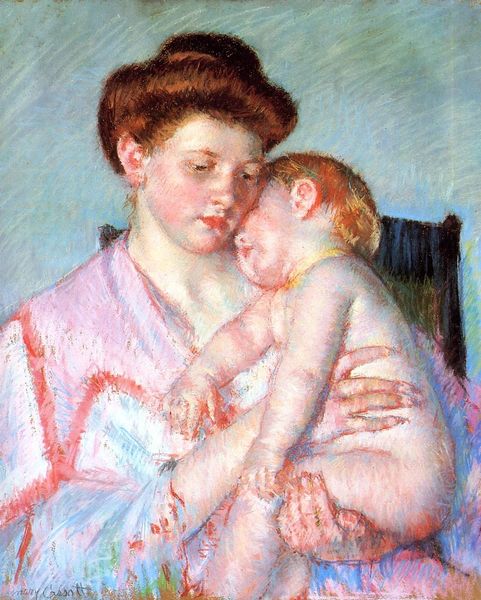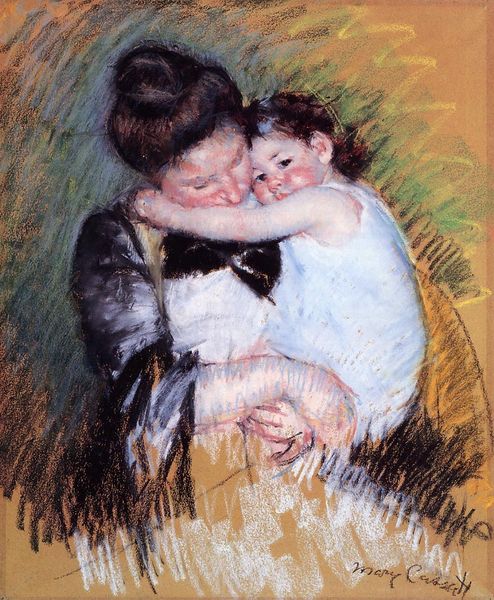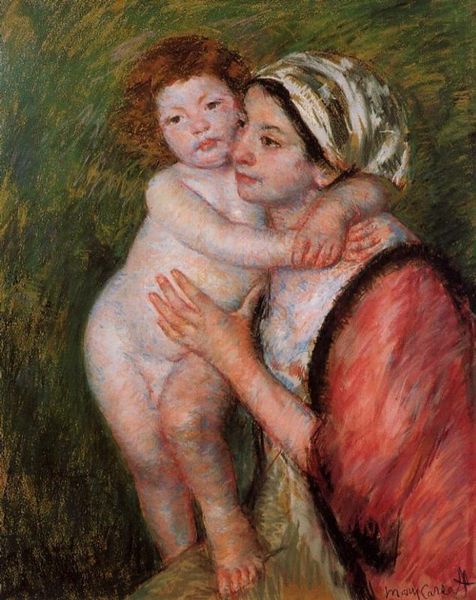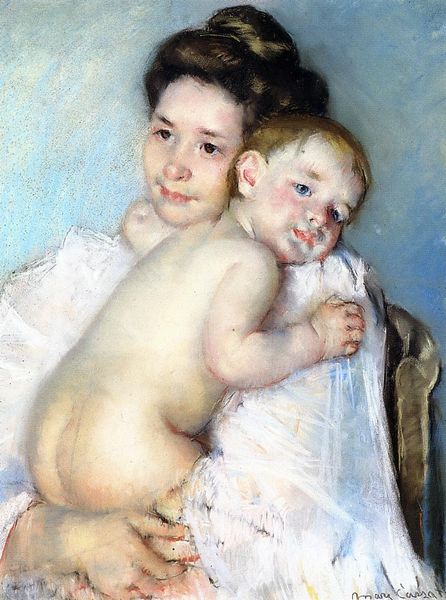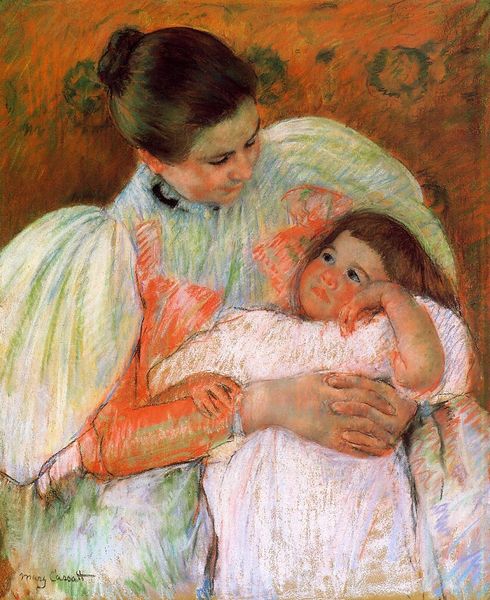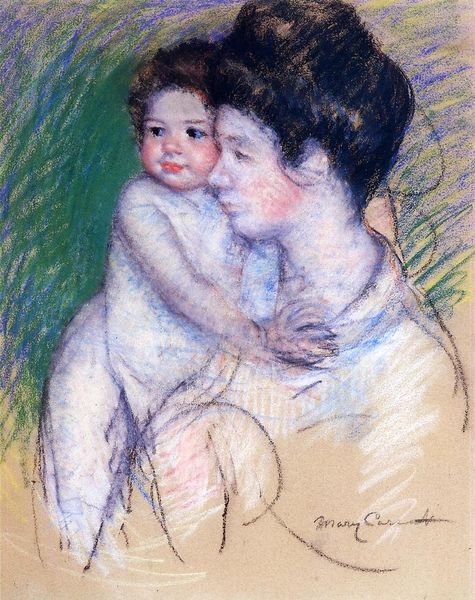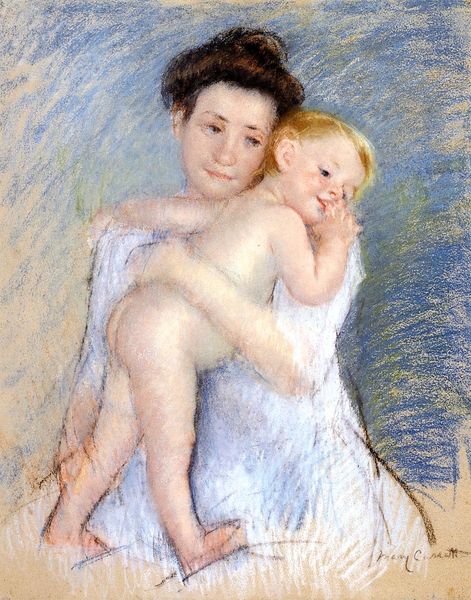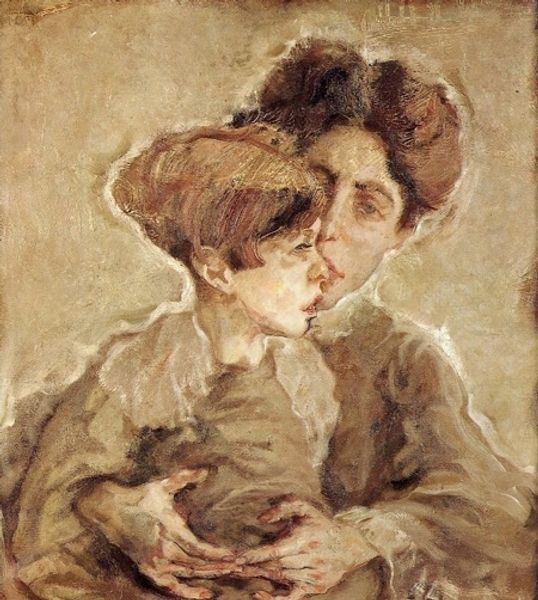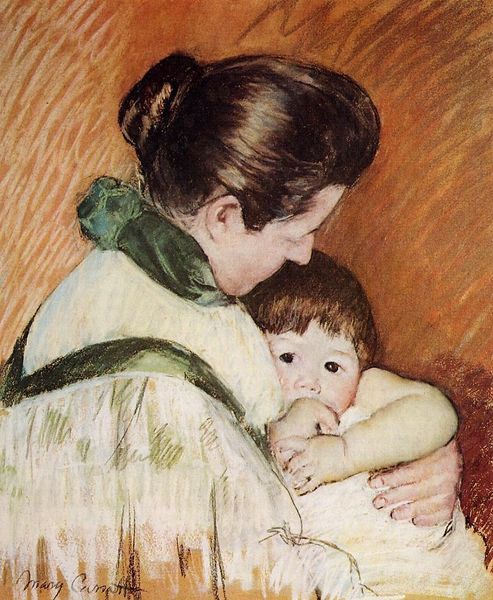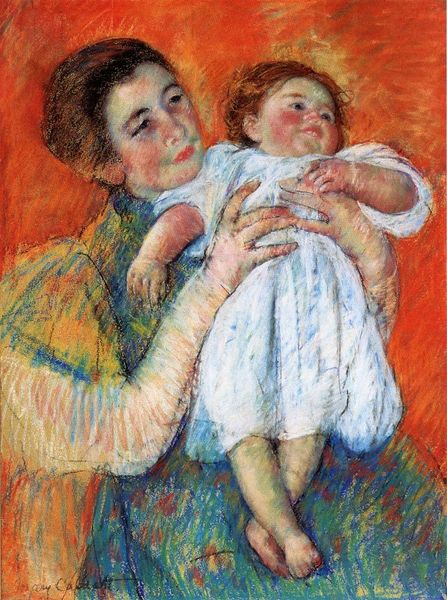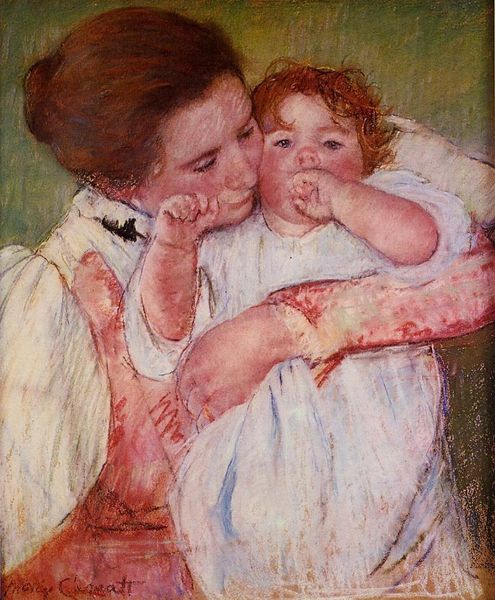
Copyright: Public domain
Curator: Welcome. We are looking at "Mother and Child" by Mary Cassatt, created around 1900, held at the Art Institute of Chicago. Cassatt captures a tender scene with pastel on paper. Editor: My immediate reaction is one of profound gentleness. The soft hues and blurred edges create a comforting, intimate atmosphere. There’s a quiet stillness to it. Curator: The composition employs a restricted palette and broken brushstrokes characteristic of Impressionism, yet Cassatt personalizes these elements to create an image that evokes domesticity. Consider how she has used line to soften the scene. Editor: Absolutely. What strikes me, too, is how this intimacy might speak to larger socio-political issues of the time. Cassatt, a woman artist in a male-dominated art world, focuses her lens on the domestic sphere, arguably highlighting the importance of female experience, maternal bonds, and perhaps even challenging societal expectations around women's roles. Curator: Interesting. While societal context undoubtedly plays a role, I find it equally fascinating how Cassatt manipulates form to achieve emotional resonance. Notice how the curve of the child’s body echoes the mother’s arm. The pastel medium itself, with its inherent softness, is integral to the artwork’s thematic and formal logic. Editor: Indeed, but don’t you think her choice of subject reflects more than pure formalism? By depicting these everyday moments between women, she subtly defies traditional patriarchal narratives that often marginalized such scenes. Cassatt's choice of a child as her primary subject allows a powerful statement on care, a role historically relegated to women, brought to the forefront. Curator: It's undeniable that thematic content contributes to the impact, yet a purely sociological reading can sometimes overlook the intricacies of Cassatt's painterly touch, don't you agree? It is through color, texture and, above all, composition that she creates something evocative beyond mere subject matter. Editor: It’s a beautiful synthesis. Cassatt encourages us to see the artistry and the context are beautifully enmeshed. The universal yet specifically female experience represented invites endless discussion about representation, identity, and the power of the female gaze. Curator: I leave this observation on that note; perhaps Mary Cassatt’s “Mother and Child” encourages us all to see art, context, and lived experience within each other.
Comments
No comments
Be the first to comment and join the conversation on the ultimate creative platform.

